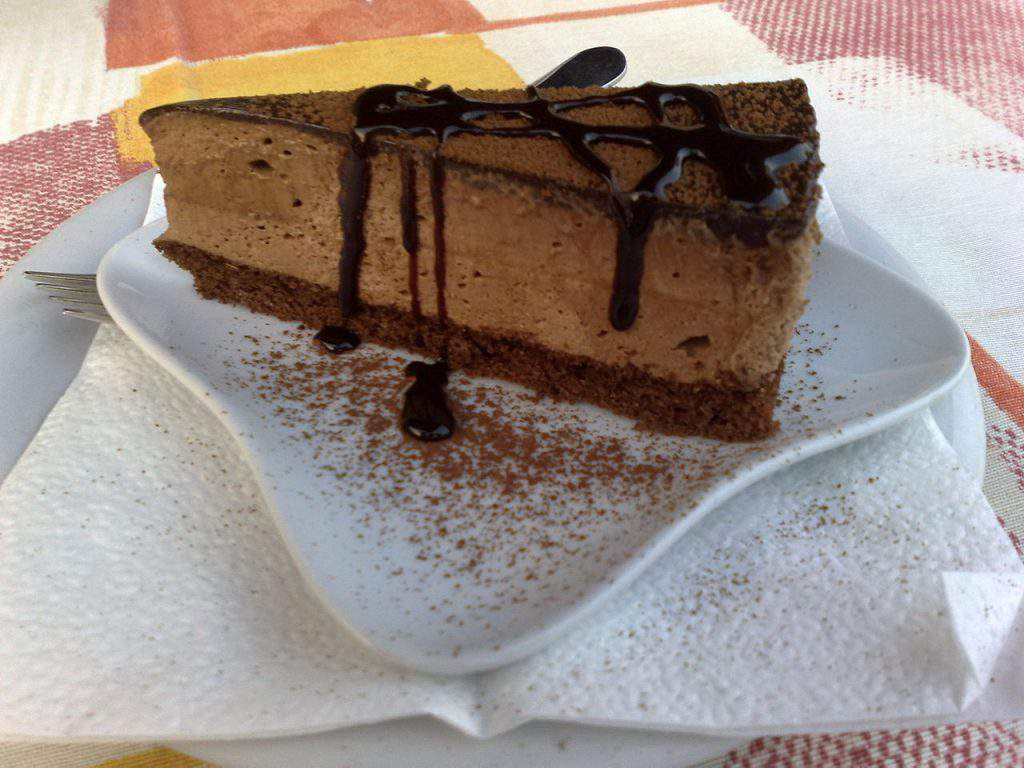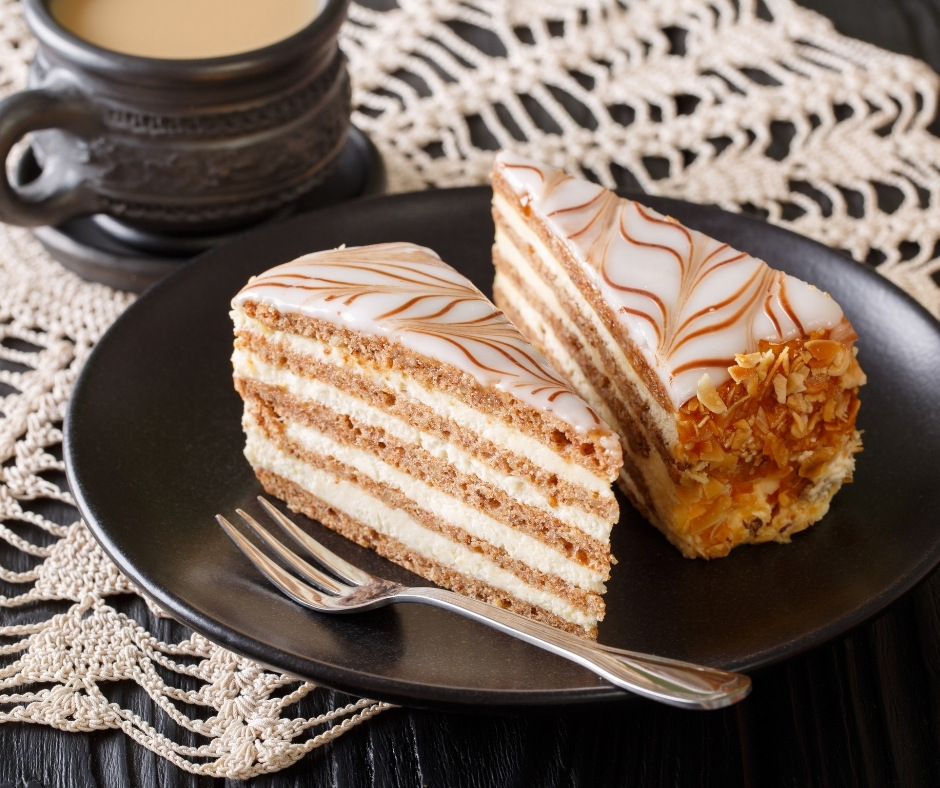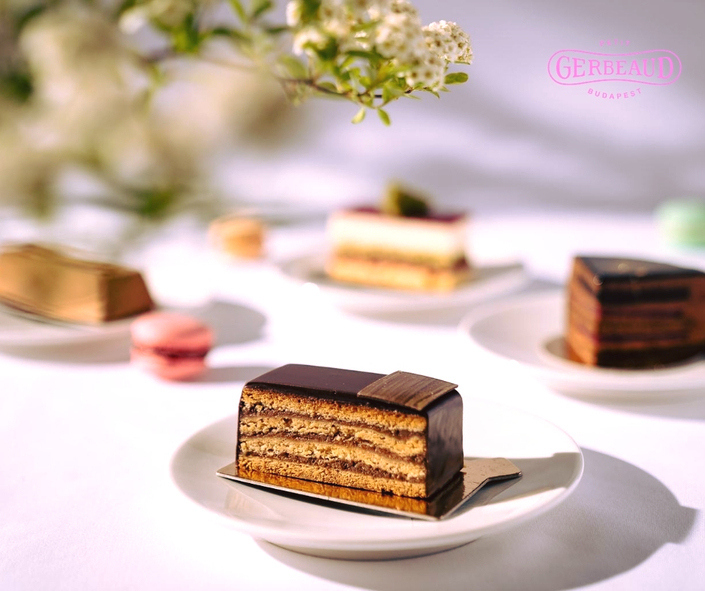Check out these recipes for Hungary’s most famous desserts

Hungary and its people are famous for their love of good food. It is almost mandatory for a good meal to end with a delicious dessert, and what could be better than finishing a meal off with some of Hungary’s most beloved and famous desserts, many of which were named after the person who came up with the idea.
This article features some of the most iconic Hungarian desserts, as well as their recipes so that you can try them out at home.
Dobos torta or Dobos torte/cake
According to the Collection of Hungarikums, this dessert is a “layered pastry named after its inventor, Hungarian chef József C. Dobos, a delicatessen owner in Budapest. Dobos cake was first introduced at the National General Exhibition of Budapest in 1885; King Franz Joseph I and Queen Elisabeth (Sisi) were among the first to taste it. The cake soon became popular throughout Europe.”

It is so iconic that it has its own entry in several English dictionaries, and the original recipe is the following:
“You need 6 sponge layers for a 22 cm cake.
For the sponge layers: mix 6 egg yolks with 3 lots (lot=half an ounce, 50 grams) of powdered sugar, whip 6 egg whites into a hard mousse with 3 lots (50 grams) of powdered sugar, then mix the egg yolks with 6 lots (100 grams) of flour and 2 lots (35 g) of melted butter.
For the cream, you need 4 eggs, 12 lots (200 grams) of powdered sugar, 14 lots (235 grams) of butter, 2 lots (35 grams) of cocoa powder, 1 lot (17 grams) of vanilla sugar, 2 lots (35 grams) of cocoa butter, and 1 bar (200 grams) of chocolate.
Beat the eggs with the sugar on the stove until it heats up, then take it off the stove and mix until it cools down.
Cream the butter, add the vanilla sugar, the melted cocoa butter, and the slightly heated, soft chocolate, then mix it with the cooled eggy mousse, fill in five sponge layers, pour caramelised sugar over the sixth layer, and cut it into 20 pieces.”
Rigó Jancsi
János Rigó was born in 1858 in Pákozd, with a great talent for playing the violin, which brought him to Pest, and he later travelled all around the world. In 1896, he performed in Restaurant Payard when he met Clara Ward and then fell in love. They both got divorced so that they could remarry. One time, he wanted to impress his woman with a creamy chocolate cake. While watching the couple, the confectioner who created the cake named it after him with a great sense for marketing. His hopes were right, the cake became popular and spread quickly.

Ingredients
For the sponge cake:
- 3 eggs
- 60 grams of sugar
- 60 grams of flour
- 20 grams of cocoa powder
For the cream:
- 400 millilitres of whipping cream
- 100 grams of dark chocolate
For the chocolate glaze:
- 40 grams of dark chocolate
- a tablespoon of butter
Instructions
For the sponge, separate the eggs and mix the egg yolks with the sugar. In another bowl, whip up the egg whites, add them to the sugary mixture and combine carefully. Then add the cocoa powder and the flour and mix everything together. Bake the sponge at 180 °C for 8-10 minutes. For the cream, melt the chocolate over boiling water. After it has melted, take it off the stove and slowly mix in the whipping cream.
Cut the sponge into two layers and spread the cream between them. For the glaze, melt the chocolate and the butter and spread the mixture on top of the upper sponge layer. Store the cake in the fridge and cut it into squares with a knife dipped into hot water before serving.
Enjoy!
Eszterházy cake
The exact origin of the recipe of this Hungarian dessert is somewhat shrouded in mystery or just lost to history, but most people connect the cake to the famous Esterházy family. Some sources mention Miklós Esterházy, while others state that the cake was made for Pál Antal Esterházy since he was known to be a real gourmand. For instance, the Esterházy sirloin was named after him.

Ingredients
For the sponge cake:
- 10 egg whites
- 300 grams of sugar
- 350 grams of ground walnuts
- pinch of salt
For the cream:
- 2 teaspoons of brandy
- 3 tablespoons of flour
- 500 millilitres of milk
- 2 packs of vanilla sugar
- 5 egg yolks
- 50 grams of sugar
- 300 grams of butter
For the glaze:
- 100 grams of white chocolate
- 50 grams of dark chocolate
Instructions
Prepare five parchment paper pieces and draw 20 cm diameter circles onto them. Whip up the egg whites and slowly add the sugar. Then carefully add the ground walnut and a pinch of salt. Mix them together without breaking the mousse. Spread the mixture equally on the five circle-shaped parchment papers and bake each of them at 200 °C for 10 minutes.
Next up, you have to make the filling. Pour the milk into a pan, add the brandy and the sugar and start heating it. Mix the egg yolks with the flour until you get a smooth consistency, and slowly add this mixture to the milk. Stir constantly until the cream thickens, and take it off of the heat. Leave it to cool, and then mix in the room-temperature butter.
Then, layer the cake. Spread the filling between the sponge layers and on the side. Cover the top layer with melted white chocolate and draw circles with the dark chocolate. Take a toothpick and draw lines from the inside of the cake, thus forming a web shape. If you wish, you can decorate the side of the cake with ground almonds. Let the cake sit in the fridge for a few hours, then serve it.
Enjoy the dessert!
Rákóczi túrós (Rákóczi cottage cheese cake)
The name can be deceiving because it was not named after famous monarch Ferenc Rákóczi II but a confectioner named János Rákóczi. He was a unique master chef who worked all over in Europe’s best restaurants. His dessert debuted in 1958 at the world exhibition in Brussels.

Ingredients
For the pastry:
- 300 grams of flour
- 150 grams of butter
- 1 teaspoon of baking powder
- 100 grams of sugar
- 2 egg yolks
- 100 millilitres of sour cream
- pinch of salt
For the cream:
- 500 grams of cottage cheese
- 100 millilitres of sour cream
- the zest of one lemon
- 2 handfuls of raisins
- 150 grams of sugar
- 30 grams of wheatmeal
- 2 egg yolks
For the topping:
- 4 egg whites
- 200 grams of sugar
- apricot jam
Instructions
Mix the ingredients of the pastry together with your hands, roll it out and put it onto your baking tray. Pre-bake it for 12-14 minutes. For the cream, mix the egg yolks with the sugar until the mixture whitens, then add the cottage cheese, sour cream, raisins, lemon zest, and wheatmeal, and combine well. Spread the cream onto the pre-baked pastry, put it back into the oven, and bake for 25 more minutes at 180 °C.
For the meringue topping, start with whipping the egg whites, then slowly add the sugar so that it becomes a stiff mousse. Put it into a piping bag and draw bars on top of the cream. Bake it for 20 minutes and lower the temperature to 130 °C so that the heat slowly dries out the meringue. After you take it out of the oven, fill in the gaps between the bars with apricot jam. Let the dessert cool down, then serve it.
Enjoy!
Gundel palacsinta (pancake)
What is not to love about these light, airy pancakes which are drizzled with warm chocolate sauce? Surprisingly, this classic delight was first called Márai pancake after renowned Hungarian author Sándor Márai.
It was his wife Lola who perfected this superb Hungarian dish; the recipe was then passed on to the owner of the acclaimed Gundel Restaurant. Károly Gundel loved this classy dessert so much that he immediately included it on the menu.
It became Gundel pancake during the communist regime when the Márai family had to emigrate, and the use of his name was prohibited.

Ingredients (makes four servings)
For the pancake:
- 500 millilitres of milk
- 250 grams of flour
- 2 eggs
- salt
- oil
For the filling:
- 200 grams of ground walnuts
- 200 millilitres of milk
- 1 stick of vanilla
- 3 tablespoons of powdered sugar
- a handful of raisins
- the zest of one orange
- 1 tablespoon of rum
For the sauce:
- 200 grams of sugar
- 5 tablespoons of unsweetened cocoa powder
- 200 millilitres of water
- 5 centilitresl of rum
Instructions
Mix the ingredients of the pancake, and let the batter sit for 20-30 minutes. Heat up a pan, spread the batter evenly, and bake thin pancakes. For the filling, heat up the milk in a pan, add the vanilla stick, let it simmer for a while, and then take out the stick. Add the ground walnuts, the powdered sugar, the orange zest, and the raisins soaked in rum.
For the chocolate sauce, heat up the water and add the sugar. After it has melted in the water, mix in the cocoa powder and the rum. Let the mixture cook until it thickens. Fill the pancakes with the walnut filling and fold them twice so that they form a fan. Serve them with chocolate sauce.
Enjoy the dessert.
Zserbó (Gerbeaud cake)
This delicious dessert was named after Emil Gerbeaud, a French confectioner. However, the story goes back a little further. It all started with Henik Kugler, a famous Hungarian confectioner, who had a workshop in Budapest. Because Kugler had no successor to pass his confectionery onto, he invited Gerbeaud to Hungary in 1882.
Two years later, Gerbeaud became the owner of the workshop, expanded the selection of desserts, and also invented the recipe of the ‘zserbó’ or Gerbaud cake. Since then, Café Gerbeaud has become one of Europe’s finest coffee houses and pastry shops.

Ingredients
- 500 grams flour
- 50+100 grams powdered sugar
- 200 grams lard (you can use butter)
- 100 millilitres warm milk
- 2 eggs
- 15 grams yeast
- salt (2 pinches)
- 200 grams ground walnuts
- 400-500 grams apricot jam or preserve (to your liking)
- 150-200 grams bitter chocolate
- 1 tablespoon butter
Instructions
Dissolve the yeast with a little salt in the warm milk. In a bowl, mix the lard and the flour thoroughly together, then add 50 g of powdered sugar, a pinch of salt, the eggs, and the dissolved yeast, then knead all of this together until you can roll it out. If the dough is too dry or hard, you can add a little warm milk to make it more pliable. If done, divide the dough into three pieces, and let them sit.
Once you have waited for a bit, you can roll out the dough into three identical pieces to fit the pan you use. Mix the ground walnuts with the rest of the sugar. Put one of the layers of dough into the greased pan, then spread half of the apricot jam or preserve onto the first layer. Cover it with the walnut-sugar mixture and poke some gentle holes into the dough with a fork. Repeat this step for the second layer, using the remaining jam and walnut, then place the third layer on top and make some holes in it with a fork.
If this is done, you should let it sit for about half an hour. Preheat the oven to 180 °C and bake for about 40-45 minutes, until it gets golden brown. It is important not to use the forced-convection or fan mode on your oven. After baking, let it cool down, then spread the mixture of butter and melted chocolate on top.
It is best if the chocolate is just warm but not hot. If you fancy, you can even put another layer of jam right underneath the chocolate topping.
Enjoy your dessert.
Source: Daily News Hungary






Once again, I would like to point out that the DNH is primarily aimed at a readership that is not familiar with decilitres or decagrams, let alone their abbreviations. Even within Europe, very few countries use these in any meaningful way, so they should be explained (especially for American readers who use the unfathomable cup measurement system). That said, there isn’t even any consistency in the way the recipes have been presented, ie Zserbó has 100ml of warm milk, not 10dcl, whereas Esterházy states 5dl of milk. The cakes are delicious but the journalism here is sloppy. Use one measurement or the other, preferably the standard metric ones and not dl’s and dk’s.
Dear Kati, thank you for your observation, I did write out the full measurements and unified it to grams and millilitres throughout all the recipes.
However, all of these measurements (including decilitres and decagrams) are part of the International System of Units.
While you might find the cup measuring system odd, it actually makes sense in its own system. For anyone who would like to use cups, the conversion rate to SI units is the following: 1 metric cup is 250 millilitres while 1 US “legal” cup is 240 millilitres.
It is a pity though that you do not give our readers as much credit as they deserve.
Dear Péter, thank you for ‘unifying’ (standardising in English) the recipe measurements. Now all that’s left is that you have to learn to spell – MILLILITRES, not millilitres. Further the cup measurements you suggest are inaccurate, because cups are by volume not weight, so a US cup of butter is 227 grams whereas a cup of bread flour is 136g. It’s a pity that you don’t give me (a former food writer for a very well known newspaper in the UK) as much credit as I deserve.
Why spoil a lovely article on delicious Hungarian desserts with an argument? I am printing them out and making several soon and adding them to my collection of at least 30 Hungarian cookbooks.. I am also Hungarian born and a pretty good cook and baker of Hungarian dishes.
Hello,
Blame it on google translate, but lots of Hungarian recipe books made the following error. Túró is not available in the US or Canada and túró is not, I repeat NOT cottage cheese! If you substitute túró with cottage cheese, all you get is a sloppy mess. It is possible to make túró from whole milk and whole buttermilk, but few people are willing to go into the trouble to do that. I have a recipe for túró here: https://zsuzsaisinthekitchen.blogspot.com/2009/01/hungarian-curd-cheese-tur.html
One thing more you left off your list is somlói galuska
https://zsuzsaisinthekitchen.blogspot.com/2011/08/somlo-trifle-somloi-galuska.html
and krémes:
https://zsuzsaisinthekitchen.blogspot.com/2011/04/hungarian-custard-slice-kremes_16.html
Cheers
Zsuzsa
Dear Zsuzsa, thank you for the info! Your desserts look amazing! 🙂 Our whole team would love to try them!